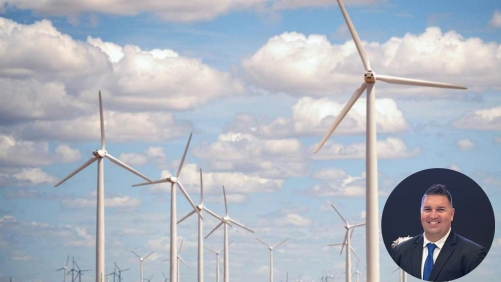Winds of change
TDT | Manama
The Daily Tribune – www.newsofbahrain.com
In a move aimed at propelling its renewable energy and environmental protection efforts, Bahrain is set to revolutionise its wind energy sector with the introduction of an innovative wind turbine system.
The groundbreaking technology, developed in Hungary, harnesses the kinetic energy of airflow to generate electricity. Tamas Hovany, Chairman of Bahrain-Hungary relations, highlighted the significance of this development in an exclusive interview with The Daily Tribune.
“This unique system can generate energy even in minimal wind conditions while operating quietly and vibration-free. Its unparalleled efficiency and space utilisation provides a significant advantage over competitors. The system is easy to install and maintain, and it is resistant to dusty and sandy environments, making it an ideal solution for desert areas,” explained Hovany, shedding light on the technological breakthrough.
Hovany went on to discuss the advantages of wind farms, stating, “Wind farms already produce energy more efficiently than solar farms (22-24 percent vs. 14-15 percent) with older technology. However, with today’s new technologies, their utilisation could exceed 30 percent.
Power plants
“Power plants do not need to be installed everywhere: the most valuable land should be exclusively reserved for agricultural production, while wind farms should be preferred on land of lower value due to significantly lower land requirements.”
He also underscored the importance of land utilisation in the renewable energy sector, stating, “Wind turbines require little space, and agricultural use of the land under their blades is both allowed and feasible.
“An average and conventional wind turbine of 3 MW occupies up to 1,000 square meters (0.1 hectare) of land, which includes the wind turbine tower and its immediate surroundings. A solar power plant of similar size would require roughly 7-8 hectares of land, an area 70-80 times larger.”
Difference
He continued, “This means that a 3 MW wind turbine can produce roughly one and a half times as much electricity in a year as a 3 MW solar plant - a difference of 120 times in terms of the unit of land occupied. Of course, this does not mean that wind power should be preferred to solar power in all situations and locations.
“For example, in protection zones around residential areas where wind power is not recommended or prohibited, solar power may still be the solution.”
Hovany concluded, “We plan to introduce and manufacture this development in Bahrain, contributing to the global recognition and adoption of wind energy and other renewable energy sources, thereby promoting the Kingdom’s advancement in the field of renewable energy and environmental protection.”
Related Posts

